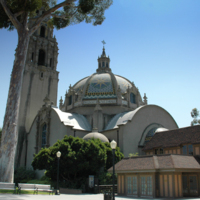
San Diego Museum of Man
The San Diego Museum of Man is an anthropological museum that originated from the 1915 Panama-California Exposition that celebrated the opening of the Panama Canal. Over the last century, the museum has expanded and developed in its original buildings at San Diego's Balboa Park. It took its present name in 1978. The museum's mission is to inspire human connections by exploring human experiences, around the world and through the ages.
The museum features twelve permanent exhibitions that explore a range of themes linking to human development and cultures. These include 'Ancient Egypt', 'Living with Animals' which explores the human practice of keeping pets, and 'PostSecret' which examines the concept of secrecy throughout societies.
Another permanent exhibition, 'Race: Are we so different?' explores the distinctions of race and the origins of racism in America. A timeline maps instances of racism throughout the nation, and includes focusses on Native American communities, as well as enslaved Africans, Civil Rights and the Jim Crow era. Text interpretation also includes biological facts about race and genetics to address long held historic views about hierarchies of race.
Initially a temporary exhibition, it was so successful with visitors the museum decided to house it permanently. 'Race: Are we so different?' was developed in conjunction with the American Anthropological Association and the Science Museum of Minnesota. The exhibition features heavily in the museum's school programmes in providing a platform to promote discussion of feeling, thinking, acting, and reflecting on race and identity, and to raise awareness and build positive relationships across communities in America today.
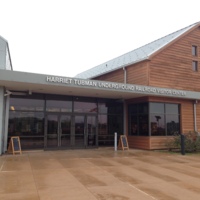
Harriet Tubman Underground Railroad National Historical Park
The Harriet Tubman Underground Railroad National Historical Park was established in 2003, the 100th anniversary of Tubman's death, in rural Dorchester County. In 2017 the Harriet Tubman Underground Railroad Visitor Centre was officially opened. The visitor centre was a collaborative project between the US National Park Service and the Maryland Park Service. The building houses exhibition space, a research library and gift shop. Also on location is a public pavilion and legacy garden.
The design of the site was built around the importance of northward movement in the slave's quest for freedom. The legacy garden stretches out north between the buildings, offering an expansive and hopeful view. The view south is more enclosed and fragmented, reflecting the intolerable existence for those enslaved. The visitor centre houses an exhibition that chronicles the life and accomplishments of Tubman; her birth into slavery, escaping and subsequently returning to free friends and family, her work as a Union spy and her activism after the Civil War. The story is told through a combination of interpretive text, videos, murals, dioramas and her own powerful words.
The park and visitor centre are open seven days a week and are free to the public. The visitor centre also provides further information on the Harriet Tubman Underground Railroad Byway Driving Tour, which has 36 stops throughout the Eastern Shore of Maryland linked to Tubman's life.
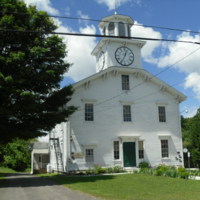
National Abolition Hall of Fame and Museum
The National Abolition Hall of Fame and Museum occupies the upper floor of the former Presbyterian Church of Smithfield, built in 1820. In 1835 it was the site of the first complete meeting of the New York State Anti-Slavery Society, and it opened as a museum to represent the history of the abolition movement in 2004. The lower floor houses the Smithfield Community Centre. In 1994, the building was added to the New York State and National Registers of Historic Places. In 2004, it was designated as a site on the New York State Underground Railroad Heritage Trail.
The Hall of Fame and Museum honours abolitionists and their achievements, periodically inducting new members. It also aims to educate about the legacy of the movement and to inspire its visitors to engage in the 'new struggle' to end racism. The museum features an introductory film that provides background context to the abolition movement, regarding the transatlantic slave trade. Written text panels, archival materials and art are used to add further depth to the narrative of the American abolition movement.
The museum also runs a programme of visitor events, and education activities.
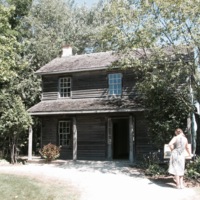
Uncle Tom’s Cabin Historic Site
Built on the site of the Black settlement that Rev. Josiah Henson helped found in 1841, Uncle Tom’s Cabin Historic Site preserves the settlement where Henson and his wife Nancy lived. The site is situated within 200 acres and was named after Harriet Beecher Stowe’s popular 1852 antislavery novel which featured an enslaved African man named Tom (based on Josiah Henson) as its protagonist. The area of land was purchased in 1841 to establish the Dawn Settlement - a refuge for the many fugitives from slavery who escaped to Canada from the USA. Today thousands of visitors travel to the site every year to learn and understand more about this history. The site includes a number of buildings which originally composed the British-American Institute, an all-ages teacher training and general education manual school. Present day visitors will find examples of a sawmill, smokehouse, and pioneer church, as well as the Henson family cemetery. The house where Josiah Henson and his wife Nancy lived has also been restored to 1850s period fashion. Also located on the site is the Josiah Henson Interpretive Centre which houses a collection of 19th century artefacts relating to the abolitionist era and to Henson himself. Highlights include a rare early edition of Henson’s autobiography and a signed portrait of Queen Victoria presented to him in 1877. Upon arrival at the Interpretive Centre, visitors are guided into the North Star Theatre where they are shown a film titled Father Henson: His Spirit Lives On. A further gallery named Underground Railroad Freedom Gallery displays a narrative of the history of African freedom seekers from initial capture in Africa and enslavement in the United States to freedom in Canada. The site also runs a variety of educational programmes aimed at children and young adults, alongside a popular programme of guided tours.
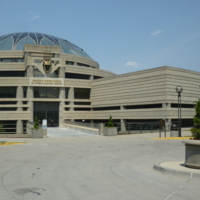
Charles H. Wright Museum of African American History
The museum was established by Dr. Charles Wright, an obstetrician and gynaecologist who envisioned an institution to preserve Black history after visiting a memorial to Danish World War II heroes in Denmark. It opened in 1965 as Detroit’s first international Afro-American museum. After expansions in 1978 and 1992, the museum was finally named the Charles H. Wright museum after its founder in 1998. It has since received monetary support from individuals, foundations, corporations, and government sources. The mission statement of the museum is to open minds and change lives through the exploration and celebration of African American history and culture.
Current exhibitions on display in the museum include a large 22,000 square-foot exhibition that examines Ancient and Early Modern African history and the experiences of the enslaved during the Middle Passage, alongside the experiences of those who resisted the horrors of bondage and self-emancipation. Throughout this exhibition, entitled ‘And Still We Rise: Our Journey Through African American History and Culture,’ there is a clear emphasis on the efforts of the everyday African American people who built families, businesses, educational institutions, and civic organisations in Detroit, past and present. The museum also offers exhibitions that look at the contributions of African Americans in science and technology, as well as showcasing examples of stained glass art by Samuel A. Hodge.
The museum has a busy events programme that includes community health and fitness programs, as well as lectures and education sessions for both children and adults. There are group tours for all ages, as well as led workshops for pre-school children. All of these workshops aim to highlight the lessons portrayed in the ‘And We Rise’ exhibition, prompting reflection and discussion from visitors.
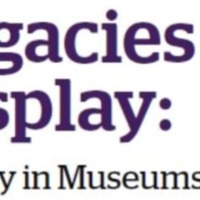
America's Black Holocaust Museum
The museum was founded in 1984 by Dr James Cameron, a self-taught historian and public speaker. The only known survivor of a lynching, Dr Cameron used his survival experience to provide visitors with a unique view of ‘living history’. Alongside this, he expanded the museum’s exhibits and employed staff, attracting local, national and international visitors. Unfortunately, the site closed following Dr Cameron’s passing in 2006 and the economic downturn of 2008. Since 2012 America’s Black Holocaust Museum has existed as a virtual museum. It seeks to educate the public of injustices suffered by people of African-American heritage, while providing visitors with an opportunity to rethink their assumptions about race and racism. It offers a range of online exhibitions, including one about the history of the museum, and another on the perpetuation of slavery through three centuries.
There are nine exhibitions available to be accessed within the virtual museum, seven of which are a chronological study of the history of Africans in America. All of them feature the museum’s four key themes: remembrance, resistance, redemption and reconciliation. Beginning with a view of life in Africa prior to enslavement, they end with an exhibition entitled ‘Now- Free at Last?’ which considers the experiences of African Americans from the 1980s up to the present day. In addition to the chronological displays, there are three special exhibitions, two of which are concerned with the victims of lynching. Within the website there are photographs, and images of objects, alongside suggestions of further reading material. There is also a section of relevant and important news articles. The virtual museum is a member of the international Coalition of Sites of Conscience, and the Association of African American Museums. The museum runs a programme of events and speakers, and is due to re-open in a physical building in Milwaukee during the Autumn of 2018.
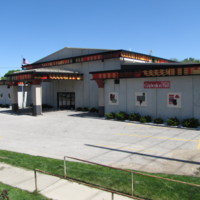
African American Museum of Iowa
The African American Museum of Iowa was founded by a small group of members of the Mt. Zion missionary Baptist church in Cedar Rapids in 1993. The museum was closed for a year during flooding, reopening in 2009. It attempts to preserve, exhibit, and teach the African American heritage of Iowa. The museum aims to examine Iowa’s African American history, from the transatlantic slave trade until Civil Rights. The museum also offers traveling exhibits available for to rent for two weeks at a small cost. It is heavily funded by donations.
The permanent exhibits at the museum are concerned with tracing Iowa’s African American history, from its origins in western Africa to the present, through slavery, the Civil War, the Underground Railroad, segregation and the Civil Rights Movement. There is also a rolling programme of temporary exhibitions on a range of themes including, art and social history. Group tours are offered for adults. These last around 45 minutes and provide additional stories, contexts, and insight into the workings of the museum throughout the tour. For younger people the museum runs field trips and hands-on workshops offering age-appropriate lessons covering local African American history and culture. There is also an online collection which includes archives, photos, library items, and oral histories.
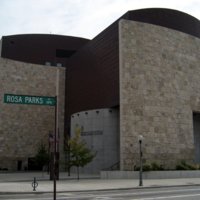
National Underground Railroad Freedom Centre
The National Underground Railroad Freedom Centre opened in August 2004 and has since strived to tell the stories of those who have fought for freedom from the Underground Railway to the present day in the hope of challenging people’s ideas about inclusivity and freedom. The museum also aims to encourage and inspire people to promote and work towards freedom. Its position next to the Ohio River is a poignant reminder of its purpose as this river separated the southern slave states from the free states of the North. The National Underground Freedom Centre examines America’s heritage alongside discussions of contemporary slavery and human trafficking. It also forms part of a group of 'Museums of Conscience' alongside three others across the United States, including the United States Holocaust Memorial Museum. The National Underground Railroad Freedom Centre reveals stories about freedom’s heroes: the men, women and children who challenge inequities to pursue greater freedom for their brothers and sisters. Through a series of rolling ‘special exhibitions’ and its vast collections displayed in several permanent exhibition spaces, the museum highlights the long history of enslavement in America, and its continuing legacy in the modern world.
The centre's most significant artifact is an original slave pen (or prison) originally built in 1830, and thought to be the only surviving example in the world. Visitors can walk through the pen and see some of the names of the people who were once held there. Alongside the pen, which is housed in its own exhibition space on the museum's second floor, there is a permanent exhibition, 'From Slavery to Freedom.' This exhibition covers three hundred years of slavery from its introduction to the Americas to its abolition. 'From Slavery to Freedom' is funded by the Oprah Winfrey Foundation and features a range of collections, including artefacts, archaeological specimens and paintings.
The centre also houses the 'world's first museum-quality, permanent exhibition on the subjects of modern-day slavery and human trafficking'; 'Invisible: Slavery Today' uses the experiences of five individuals who have been caught up in different forms of contemporary slavery and exploitation to highlight the issue in the modern world, as well as including examples of modern antislavery work around the world.
The centre also contains examples of interactive exhibits, with films, hands-on activities and live gallery talks, aimed at providing their visitors with a multi-sensory experience.
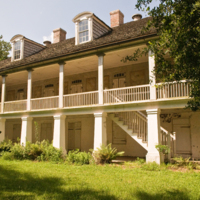
The Whitney Plantation
Widely claimed to be the first museum in America to solely address slavery, the Whitney Plantation is a plantation estate, museum and memorial outside New Orleans, on Louisiana's famed River Road. During the eighteenth and nineteenth centuries, the plantation was home to the Haydel family, and their enslaved workers. The site was bought in 2000 by a retired lawyer, John Cummings, who funded the renovation and redevelopment of the site, which opened to the public as a museum in 2014. On arrival, visitors must join a guided tour to see the majority of the site, but the museum is open to all.
On the property visitors will find a range of exhibits, including the Mansion House, slave quarters, a blacksmith's shop and a Baptist church. There is also a 'Wall of Honour' which features the names of all those enslaved at the plantation, as taken from the site's archives. In addition, there is a sculpture installation created by American artist Woodrow Nash called 'The Children of Whitney,' that seeks to remind visitors that slavery affected children as well as adults.
The site houses a significant collection of artefacts too. These range from plantation tools and house furniture. There is even the largest collection of sugar kettles in the whole of Louisiana. Much of this collection has been purchased at auctions around the USA, in a bid to redisplay the site as it was during the antebellum period. There are three archaeological sites which also contribute collections of material linked to the lives of the enslaved themselves. All of this provides visitors with a unique perspective of plantation life, and helps to break down the ignorance still surrounding histories of American enslavement.